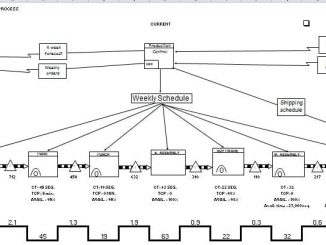There are five principles when taking a lean approach to process mapping:
- Principle 1 – Precisely specify the value of a specific process
- Principle 2 – Identify the value stream for each process
- Principle 3 – Allow value to flow without interruptions
- Principle 4 – Let the customer pull value from the process team
- Principle 5 – Continuously pursue perfection
Does a process that takes five minutes to complete require 30 pages of documentation? No. Many of you who have seen process instructions elsewhere in your careers may have seen ISO 9001 templates used in manufacturing environments.
Others have used flowcharts, value-stream maps, spaghetti diagrams, swimming lanes, and others. While these are all great tools, they serve different needs and purposes.
Allow us to introduce the SIPOC below which should be the first step to any process-mapping exercise.
The SIPOC
The SIPOC Identifies:
- Major tasks and activities
- The boundaries of the process
- The process outputs
- Who receives the outputs (the customers)
- What the customer requires of the outputs
- The process inputs
- Who supplies the inputs (suppliers)
- What the process requires of the inputs
- The best metrics to measure
Supplier – Know and work with your supplier. Help your supplier improve by informing them what you need to better succeed.
Input – Strive to continually improve the inputs. Make it easier to get it right the first time.
Process – Describe the process at a high level, but detailed enough so that an executive or a lay person would understand. Mistake-proof the process. Know it inside out. Know what works. Eliminate what doesn’t.
Output – Strive to continually improve the outputs. Be the best with metrics!
Customer – Keep the customer’s requirements in sight. Stay on target.
The SIPOC is an excellent team building tool putting emphasis on inter-departmental cooperation. Mapping processes at a high level is more than just writing ISO instructions or making flashy “Visios”.




Be the first to comment